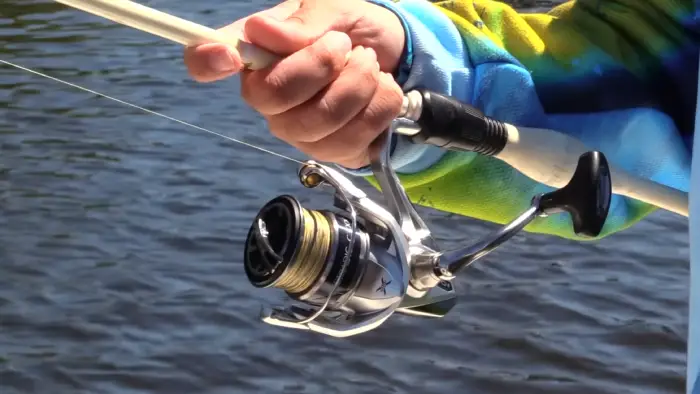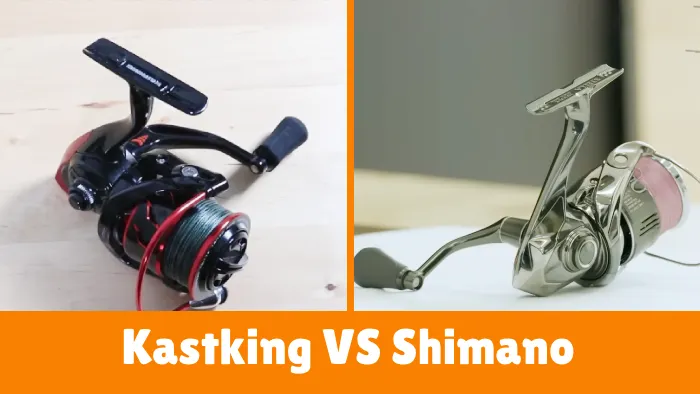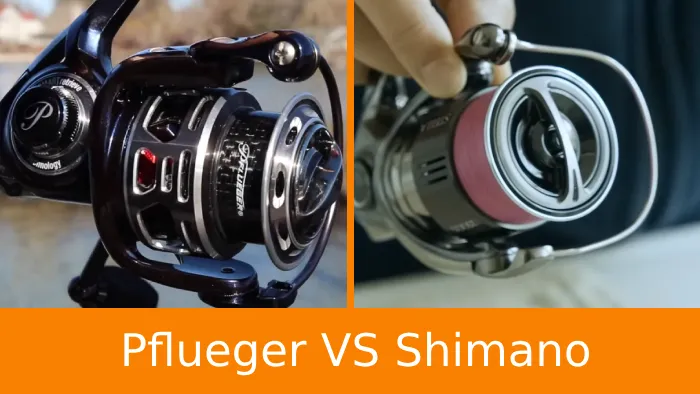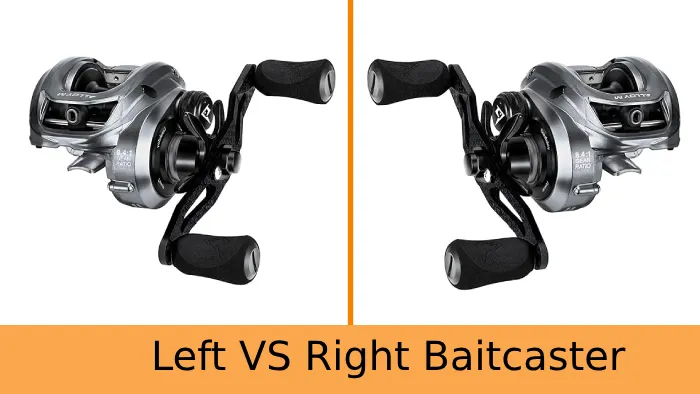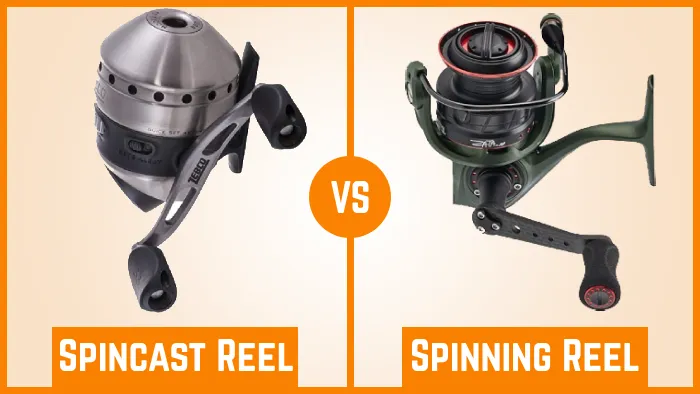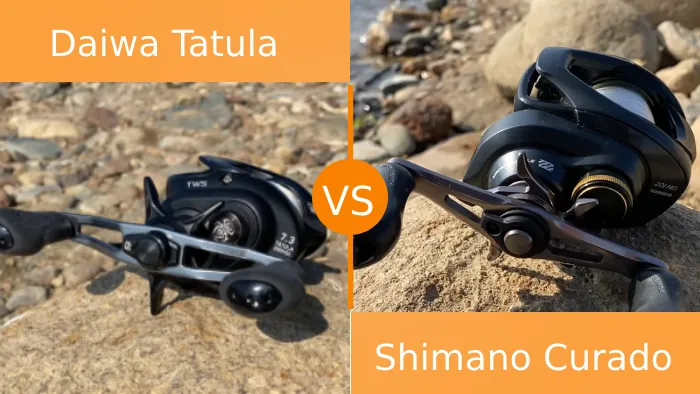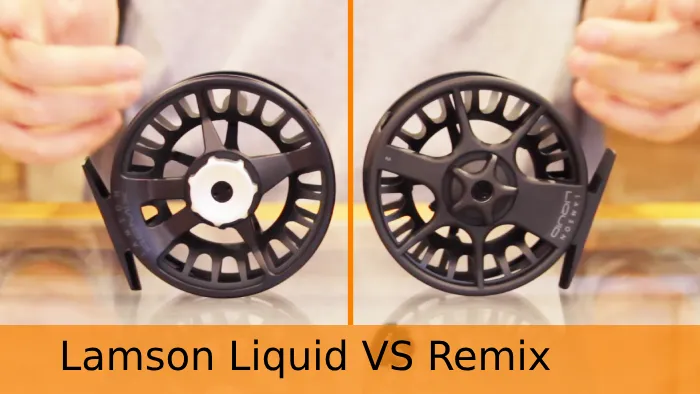Can I Use a Spinning Reel on a Casting Rod: 5 Reasons to Avoid It
When you’re out fishing, sometimes, you might find yourself in a situation where you only have a spinning reel on hand. So, it is normal to wonder, can you use a spinning reel on a casting rod for successful fishing?
Using a spinning reel on a casting rod is technically possible but not recommended for an optimal fishing experience. Casting rods and spinning rods are designed for specific reel types.
Their differences in guide layout and rod action can lead to reduced casting distance, altered performance, and even potential damage to your equipment.
We will discuss in detail why it is not recommended to use a spinning reel on a casting rod.
Can I Use a Spinning Reel on a Casting Rod: Reasons Why It Is Not Recommended
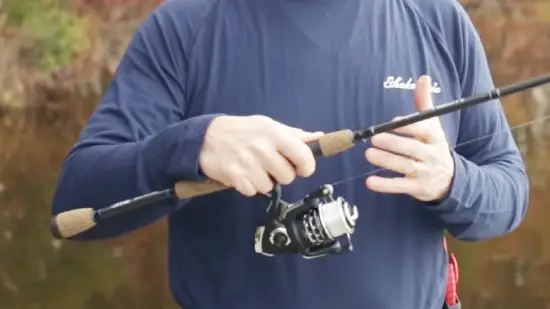
For several reasons, using a spinning reel on a casting rod isn’t recommended.
- Guide layout
- Rod flexion
- Comfort and efficiency
- Rod backbone
- Risk of damage
1. Guide Layout
Although it may be tempting, you shouldn’t use a spinning reel on a casting rod due to the mismatched guide layout. The guide layout is specifically designed to accommodate the line exit angle of each type of reel.
Spinning rods have larger guides that can handle the larger line exit angle of a spinning reel. On the other hand, casting rods have smaller guides that are positioned closer to the rod blank.
When you use a spinning reel on a casting rod, the line exit angle isn’t aligned with the smaller guides, causing immediate line deflection and friction. This not only reduces your casting distance but also affects the accuracy of your casts.
The mismatched guide layout can lead to tangles and line breakages, making fishing inefficient and inconvenient with a spinning reel on a casting rod.
Therefore, using the appropriate reel type for your rod is highly recommended to ensure optimal performance when fishing in Alaska or at your favorite fishing spot.
2. Rod Flexion
To understand why using a spinning reel on a casting rod isn’t advisable, you need to consider rod flexion. Rod flexion refers to how a rod bends when pressure is applied, and it plays a crucial role in the rod’s performance.
Casting rods are designed to bend away from the guides, allowing for accurate casting and better hook sets. On the other hand, spinning rods are designed to bend towards the guides, which helps in casting lighter lures and provides better control while fighting fish.
The rod’s performance is compromised when a spinning reel is used on a casting rod. As a result of the spinning reel’s orientation, the rod flexes in the wrong direction, which affects its ability to cast accurately, efficiently set hooks, and fight fish effectively.
3. Comfort and Efficiency
For optimal comfort and efficiency, it’s best to mount a spinning reel on a spinning rod and a casting reel on a casting rod. Using a spinning reel on a casting rod, you may experience several issues that can affect your fishing experience.
Firstly, the balance of the rod and reel combination may be off, which can make it more difficult to cast accurately and control your line. The spinning reel may also not fit securely on the casting rod, leading to potential wobbling and instability.
Additionally, the different design and mechanics of spinning and casting reels can affect the overall performance of your setup.
Spinning reels are designed to handle lighter lines and lures, while casting reels are better suited for heavier lines and lures. Using a spinning reel on a casting rod can limit your ability to cast longer distances and handle larger fish effectively.
4. Rod Backbone
Using a spinning reel on a casting rod can seriously compromise its backbone and performance. Casting rods are specifically designed with a particular backbone, which includes a flexible and elastic part for bending when needed and a stiffer part for power.
Mounting a spinning reel on a casting rod disrupts this balance, resulting in an overly soft and ineffective rod. The backbone of the rod is responsible for providing the necessary strength and power to handle larger fish and cast heavier baits.
When a spinning reel is used on a casting rod, it causes the rod to lose its stiffness and ability to handle heavy loads. This can lead to poor performance, reduced casting distance, and potential damage to the rod.
It’s highly recommended to use a spinning reel on a spinning rod and a casting reel on a casting rod to ensure optimal performance and longevity of your fishing gear.
5. Risk of Damage
Regarding fishing equipment, matching the reel and rod properly is important. Using a spinning reel on a casting rod can lead to potential damage and frustration.
One of the main risks is the possibility of breaking the rod. Rod blanks have a spine, and forcing them to bend against it can weaken the structure and eventually result in breakage.
Another risk is the fishing line getting tangled and snapping. Since spinning reels are designed to guide the line off the spool in a circular motion, using it on a casting rod with guides designed for linear motion can cause the line to curl and get caught, leading to lost fish and line breakage.
How to Use a Spinning Reel on a Casting Rod in an Emergency?
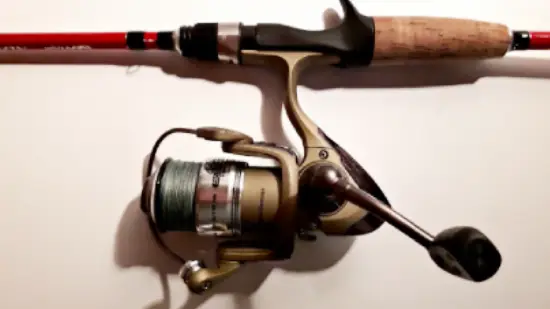
While it’s not the recommended setup, if you still wish to use a spinning reel on a casting rod, here’s a step-by-step guide:
Step 1: Gather Your Equipment and Check the Compatibility
Before attempting to use a spinning reel on a casting rod, you need to gather the necessary equipment. To start, you need a spinning reel and a casting rod. When selecting a spinning reel, consider your fishing needs before choosing the right reel that matches them. Ensure that the spinning reel is in good working condition and loaded with the appropriate fishing line.
Next, you need to choose a casting rod that is suitable for your fishing style and the species you intend to target. It is essential to check the compatibility between the spinning reel and the casting rod, particularly regarding guide sizes.
The most vital compatibility factor is the size of the guides on the casting rod. Spinning rods generally have more oversized guides designed to accommodate the larger line exit angle of spinning reels. While a spinning reel can be attached to a casting rod, there may still be some friction due to the mismatch in guide sizes.
Step 2: Attach the Reel
Once you have gathered the necessary equipment and ensured compatibility to the best extent possible, it’s time to attach the spinning reel to the casting rod. If there is already a reel attached to the casting rod, carefully remove it by loosening the reel seat and sliding it off.
Next, place the spinning reel onto the reel seat of the casting rod, similar to attaching a casting reel. Make sure it fits snugly and securely, and tighten the reel seat to hold the spinning reel firmly in place.
Step 3: Spool Your Reel
With the spinning reel securely attached to the casting rod, it’s time to load the reel with a fishing line. You need to select the appropriate fishing line for the species you are targeting and the fishing conditions.
Thread the fishing line through the guides on the casting rod, being mindful of any potential friction due to the guide size mismatch.
Follow the manufacturer’s guidelines for spooling your spinning reel, ensuring the line is loaded evenly and without any twists or tangles. To spool the reel, you may need a friend to hold the line tension while you do it.
Step 4: Test Your Setup
Now that your spinning reel is successfully attached to your casting rod and spooled with a fishing line, it’s time to put your setup to the test.
Head to a suitable fishing location and pay attention to your casting distance. You may notice a decrease in casting distance compared to using a spinning reel on a spinning rod due to the differences in guide size and line exit angle.
Keep an eye on the performance of your fishing line. Be prepared for potential issues like line friction against the guides, which can affect casting accuracy and overall efficiency.
To observe how the casting rod behaves under pressure, keep in mind that spinning rods are designed to bend toward the guides when under stress, while casting rods bend away from them. This difference can affect casting, hook setting, and fighting fish.
How can you minimize issues when using a spinning reel on a casting rod?
To reduce the possibility of problems when using a spinning reel on a casting rod, several steps can help improve your fishing experience. Ensure that the spinning reel fits securely on the casting rod to reduce any potential wobbling or instability.
Choose the right fishing line for your target species and conditions, as using the appropriate line can mitigate some friction and casting distance limitations. Be prepared for potential challenges, such as line friction against the larger guides on the casting rod, and adapt your casting techniques accordingly.
Remember that while these steps can help minimize issues, using mismatched equipment may still result in performance limitations, so it’s generally best to use the correct reel type for the rod whenever possible to ensure optimal results on the water.
Is a casting rod the same as a baitcaster?
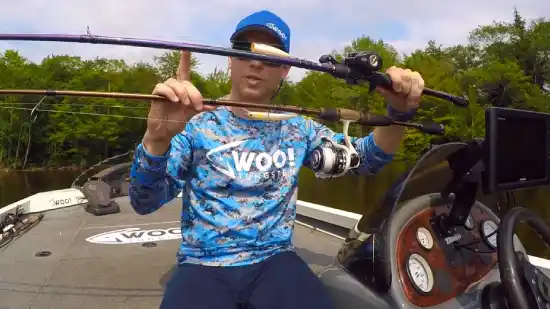
A casting rod is essentially the same as a baitcaster. It is specifically designed to be used in conjunction with a baitcasting reel. One key characteristic that distinguishes casting rods from spinning rods is the orientation of their guides.
Casting rods have guides that face upward, which is perfectly suited to prevent the fishing line from tangling during casting when paired with a baitcasting reel. This configuration enables anglers to use baitcasting reels effectively and provides the necessary support for casting accuracy and control.
Reeling in the Right Decision: Maximize Your Fishing Experience
While it’s technically possible to use a spinning reel on a casting rod, the detailed reasons we’ve explored make it clear that this combination is not the ideal choice for an optimal fishing experience.
From guide layout mismatches to compromised rod flexion and potential damage risks, using the right reel type for your rod is crucial. It ensures better performance, casting accuracy, and overall efficiency on the water.
So, when you’re faced with the choice between a spinning reel and a casting rod, it’s generally best to stick to the recommended pairings to make the most of your fishing adventures and avoid unnecessary complications.

